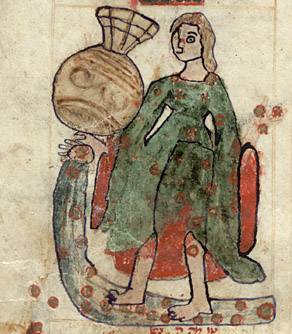May 31st, 2005

- David Kolb has produced a hypertext essay on the nature of modern spaces in cities called Sprawling Places
- This hypertext has 100,000 words, 600 pages and 1,000 images
- The work is multiply linked and threaded by a number of outlines or themes
- It is possible for two (or more) people to ‘read’ the work in quite unconnected ways and in different sequences
- Kolb is also revising a ‘linear’ version of the piece (25% content overlap)
- ‘Reading’ this essay feels very different from reading a book
- Multiply threaded hypertext has not been prominent recently – Web sites have tended to close down the navigation and structure the content in more linear ways – I welcome this opening up
Iain Sinclair’s London Orbital tackles similar themes – the suburbs vs the City – via a series of walks around the route of the M25. Sinclair interviews J. G. Ballard (in his bunker in Shepperton) and explores periphery. The book has a beginning a middle and an end and a series of side storys and comic ‘business’ at various points. Will I be re-reading Kolbs hypertext ina few years?
Posted in Notes, Web | Comments Off
May 30th, 2005
A BBC News article reports a survey by the Institute of Advanced Motorists into perceived driving risks based on a sample of 700 drivers. The survey finds differences based on gender and age regarding the risks.
- 60% of women drivers in the sample cited ‘tailgating’ as a major risk compared with 47% of male drivers in the sample
- 61% vs 44% gender split for finding mobile phone use while driving dangerous
- 30% of drivers between 17 and 30 cited mobile use as a major risk compared with 50% of the other age groups
The Institute of Advanced Motorists provide a 2 page press release with more details of the survey method and further figures . Its a PDF file for no apparent reason. Good stuff for statistics lessons aimed at adult students who themselves span the age ranges mentioned in the report.
Posted in Maths | Comments Off
May 29th, 2005

“All in all, the manuscript represents a unique blend of Greek, Arabic and Hebrew scholarship, written in Christian Spain. It is secular and scientific and yet richly illuminated on vellum and illustrated luxuriously.”
The Schoenberg Centre for Electronic Text and Image has online images of manuscripts – some of which have blank pages (texture layers in GIMP)
Posted in Notes | Comments Off
May 29th, 2005

Nice bank holiday and good luck with the exams!
Posted in Photos | Comments Off
May 28th, 2005

GNU emacs is a powerful text editor found on many Unix based/related systems. My main interest in using the emacs that comes with Mac OS X (currently 20.2.1) is the Lisp interpreter that is a fundamental part of the editor. Most of the functionality of the editor is built using emacs lisp, and extra ‘packages’ can be written and added into emacs to provide functions. As emacs ports exist for most operating systems, a set of astronomical routines written as a package would then be movable between platforms.
GNU emacs uses the ctrl key to issue commands, and also makes use of a ‘meta’ key to increase the number of shortcuts available. Mac OS X Terminal ‘catches’ the Apple key so the ESC key ends up being used as the meta key. This is difficult to use and makes some key combinations that are used in emacs impossible to access. A partial workround (which dawned on my conciousness after some Web searching) is to use X11 and an xterm window. Just
- Load X11
- Go to X11 menu on the menu bar
- Click Preferences
- Click on the Input tab
- Uncheck the Enable Key Equivalents Under X11 option (last of 3 on the list)
- Start an xterm session
- Type emacs and you are away with the apple or command key aka ‘the 4-leaf clover’ acting as meta
You can put a .emacs customisation file in your ‘home’ directory and emacs picks this up when starting. I start my emacs in text edit mode with the autofill submode running.
Posted in Notes | Comments Off
May 26th, 2005
The list below is a first bash at a study skills handout for GCSE Maths students…
Some quick hints for studying Maths again…
- You are not alone – get to know other members of the class – you will realise that we are all up the same creek in the same kyak paddling in the same direction.
- Work with other people in the class – after a few weeks, you will probably be sitting with people you get on with and who are working at roughly the same pace as you are. If you get stuck, try talking through problems. Try explaining something you understand to somone who hasn’t quite got it yet.
- Get the textbook – and use it (more on this later)
- Get an A4 ringbinder – and keep it organised (more later)
- Understanding = Familiarity You learn Maths by doing it – so do plenty
- Little and often – allocate a regular time each week to do maths homework – same time, same place seems to work best for most people
- Use support – you can get extra help and if you can arrive 10 minutes early you can ask extra questions. Don’t let small problems turn into big ones.
- Keep a list of questions – make notes on things you found hard as you do the homework each week
- Record your progress – tick things off on the summary scheme of work as we cover them
Posted in Notes | Comments Off
May 25th, 2005
- 400g red lentils
- 1.5 litres water
- 4cm piece of root ginger chopped small
- ¼ teaspoon of ground tumeric (haldi)
- 1 teaspoon of salt
- 1 teaspoon of chilli powder
- 1 tomato quartered
For the terka
- 4 tablespoons of oil
- 1 small onion thinly sliced
- 2 garlic cloves, crushed
Boil the lentils, water, ginger and tumeric in a heavy saucepan – simmer for 15 minutes, removing the foam that sometimes comes from the lentils (I rinse the lentils a few times first). Add salt, chilli and tomato and simmer for another 10 or 15 minutes. Transfer to a nice dish.
The ‘terka’ (means ‘something fried’) is made by heating the oil in a heavy bottomed frying pan and frying the onion and garlic until crisp and warm honey brown, about 3 to 5 minutes on a medium heat.
Pop the terka onto the top of the dal and serve with naan and yoghurt.
Adapted from Ismail Merchant’s Indian Vegetarian Cooking, a Sainsbury Cookbook, 1992.
Posted in Notes | Comments Off



